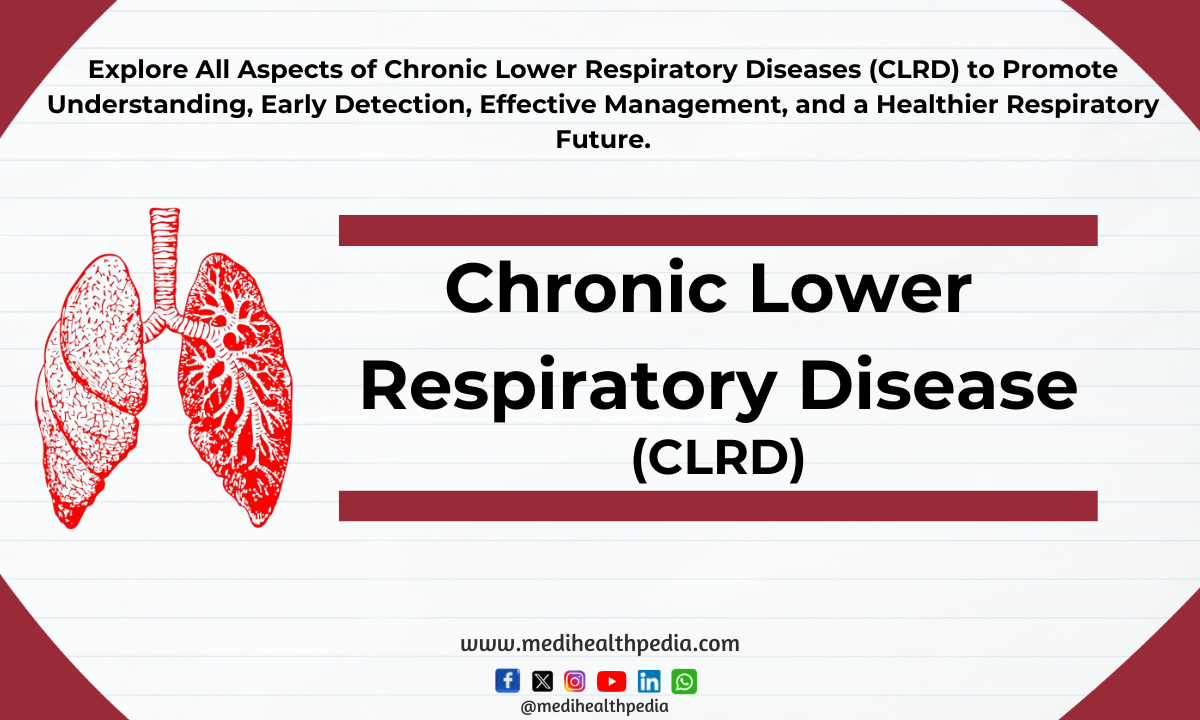Breathe Easy: Defeating Chronic Lower Respiratory Disease (CLRD) with These Proven Prevention Strategies
- Breathe Easy: Defeating Chronic Lower Respiratory Disease (CLRD) with These Proven Prevention Strategies
- Introduction
- Understanding Chronic Lower Respiratory Disease (CLRD)
- Causes and Risk Factors
- Lifestyle Choices for Prevention
- Lifestyle Choices for CLRD Prevention - Bullet Points:
- Protecting Your Lungs: Indoor and Outdoor Strategies
- Protecting Your Lungs: Indoor Strategies - Sub-bullet Points:
- Protecting Your Lungs: Outdoor Strategies - Sub-bullet Points:
- Occupational Health and Prevention
- Early Detection and Monitoring
- Support and Resources
- Role of Natural Remedies for Treatment & Prevention
- Conclusion
Introduction
Chronic Lower Respiratory Disease (CLRD) refers to a group of chronic respiratory conditions that affect the lower respiratory tract, including chronic bronchitis and emphysema. It is a major public health concern worldwide, causing significant morbidity and mortality. Understanding CLRD, its causes, risk factors, and prevention strategies is crucial in reducing its burden on individuals and society.

Understanding Chronic Lower Respiratory Disease (CLRD)
CLRD encompasses a range of respiratory ailments characterized by persistent inflammation and damage to the airways and lung tissues. Chronic bronchitis involves the inflammation of bronchial tubes, leading to increased mucus production, coughing, and difficulty breathing. Emphysema, on the other hand, results from the destruction of alveoli, the tiny air sacs in the lungs responsible for gas exchange. Both conditions gradually worsen over time, impairing lung function and reducing the body’s ability to take in oxygen.
Causes and Risk Factors
While smoking remains the primary cause of CLRD, other factors such as exposure to environmental pollutants, genetic predisposition, and occupational hazards also play a significant role. Long-term exposure to tobacco smoke, either through active smoking or secondhand smoke, greatly increases the risk of developing CLRD. Additionally, exposure to air pollution, including particulate matter and chemicals, can contribute to the development of CLRD. Some individuals may also have an inherited deficiency of alpha-1 antitrypsin, a protein that protects the lungs from damage, putting them at higher risk for developing CLRD.
Lifestyle Choices for Prevention
To prevent CLRD, adopting a healthy lifestyle is crucial. Avoiding tobacco smoke is paramount, as it is the most significant risk factor for the disease. If you are a smoker, quitting smoking is the single most effective way to prevent CLRD and halt its progression. Engaging in regular physical activity and maintaining a healthy weight can also help reduce the risk of CLRD. Additionally, adopting a balanced diet rich in fruits, vegetables, and whole grains provides essential nutrients that support lung health and overall well-being.
Lifestyle Choices for CLRD Prevention - Bullet Points:
- Avoid tobacco smoke, including secondhand smoke.
- Quit smoking if you are a smoker.
- Engage in regular physical activity.
- Maintain a healthy weight.
- Follow a balanced diet rich in fruits, vegetables, and whole grains.
Protecting Your Lungs: Indoor and Outdoor Strategies
Efforts to prevent CLRD should also include measures to protect the lungs from indoor and outdoor pollutants. Indoors, ensuring proper ventilation, particularly in areas where pollutants may be present, such as kitchens and areas where chemicals are stored, is essential. Using air purifiers and avoiding the use of harmful household products can further help reduce exposure to indoor air pollutants. Outdoors, minimizing exposure to pollutants such as vehicle emissions and industrial pollutants is crucial. When air quality is poor, it is advisable to limit outdoor activities and stay indoors with windows closed.
Protecting Your Lungs: Indoor Strategies - Sub-bullet Points:
- Ensure proper ventilation in areas with potential pollutant sources.
- Use air purifiers to improve indoor air quality.
- Avoid using harmful household products that release pollutants.
Protecting Your Lungs: Outdoor Strategies - Sub-bullet Points:
- Minimize exposure to vehicle emissions and industrial pollutants.
- Check air quality index before engaging in outdoor activities.
- Stay indoors with windows closed when air quality is poor.
Occupational Health and Prevention
Certain occupations carry a higher risk of exposure to harmful substances that can contribute to the development of CLRD. Jobs involving prolonged exposure to dust, chemicals, fumes, or gases, such as mining, construction, and manufacturing, may increase the risk of CLRD. Implementing appropriate workplace safety measures, including adequate ventilation, personal protective equipment, and regular monitoring of airborne pollutants, is vital in preventing occupational CLRD. Occupational health screenings and employee education programs should also be encouraged to raise awareness and ensure early detection of any lung-related abnormalities.
Early Detection and Monitoring
Early detection and monitoring of CLRD are crucial in managing the disease and preventing its progression. Regular medical check-ups, including lung function tests, can help identify any abnormal lung changes and enable early intervention. If symptoms such as persistent cough, shortness of breath, or wheezing are present, seeking medical attention promptly is essential. Those at high risk, such as smokers and individuals with occupational exposure, should undergo regular screenings to detect CLRD at its earliest stages.
Support and Resources
Living with CLRD can be challenging, both physically and emotionally. Seeking support from healthcare professionals, support groups, and online resources can provide valuable information, coping strategies, and emotional support. Connecting with others who share similar experiences can foster a sense of community and empowerment while navigating the challenges of living with CLRD. Additionally, healthcare providers and organizations dedicated to respiratory health often offer educational materials and programs aimed at improving self-management skills and overall quality of life.
Role of Natural Remedies for Treatment & Prevention
While conventional medical treatments remain the cornerstone of CLRD management, some individuals explore natural remedies to complement their treatment plan. Certain herbal remedies, such as licorice root and eucalyptus, are believed to have expectorant and anti-inflammatory properties, potentially aiding in the relief of respiratory symptoms. However, it is important to consult with a healthcare professional before incorporating natural remedies into your CLRD management plan to ensure safety and avoid potential interactions with prescribed medications.
Conclusion
Chronic Lower Respiratory Disease (CLRD) is a complex condition that requires comprehensive prevention strategies to mitigate its impact. Understanding the causes and risk factors, adopting a healthy lifestyle, protecting the lungs from pollutants, and seeking early detection and support are all vital components in preventing and managing CLRD. By prioritizing lung health and taking proactive measures, individuals can reduce their risk and improve their overall respiratory well-being. Remember, prevention is key in the fight against CLRD.

